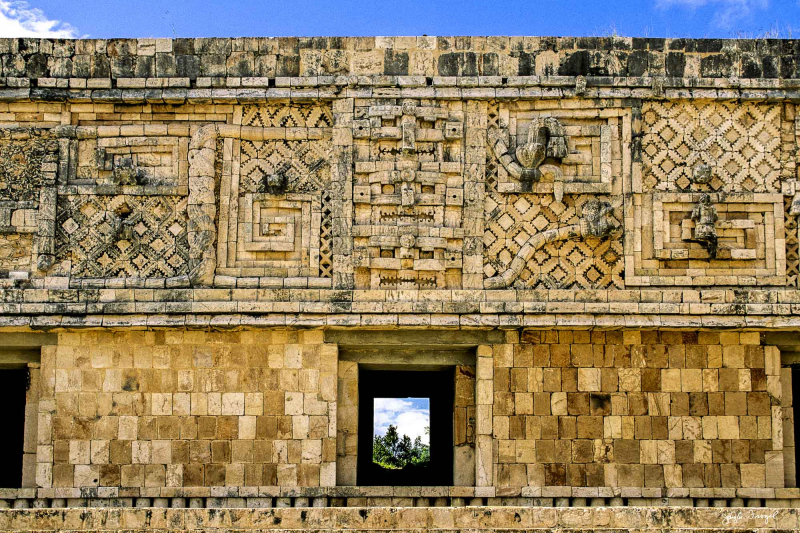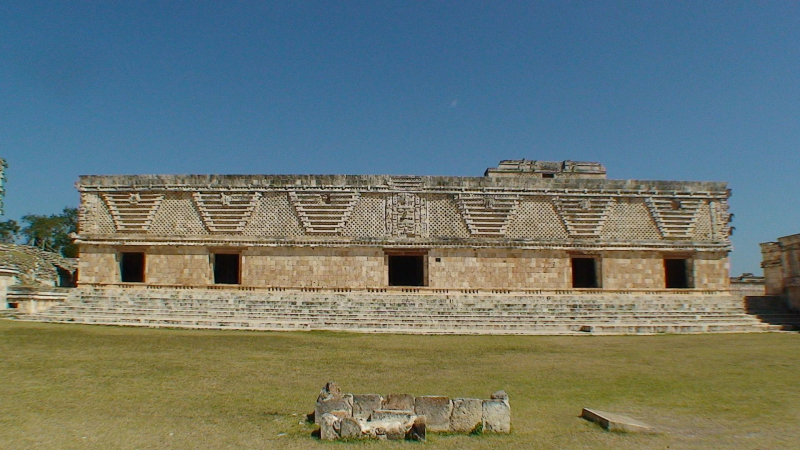Palaces
The palaces constructed during the Maya era were enormous and frequently served as administrative hubs. To ensure that they could be topped with a single capstone, these palaces were "corbelled," which is when a certain sort of flat stone was stacked up with a tiny overlap to produce a narrow gap. These imbalanced vaults were supported by wooden crosses.
One of the most important examples of this sort of architecture is the Nunnery Quadrangle building in Uxmal. The Nunnery Quadrangle was constructed using a conventional design to resemble a temple pyramid. There are 13 doorways in the north building, 9 in the south, and 7 in the west. These entrances stand in for the heavenly, Xibalba, and earthly planes, respectively. The Palenque palace belongs to the same group. This three-story monument has a distinctive style as well as appealing elements like lovely carvings.
The palaces were built with portals that symbolized the path to a new realm through the mouths of sacred caverns. Restrooms, kitchens, halls, and sleeping quarters were also included. Some of them even had lavatories and steam rooms, implying a high standard of living.












